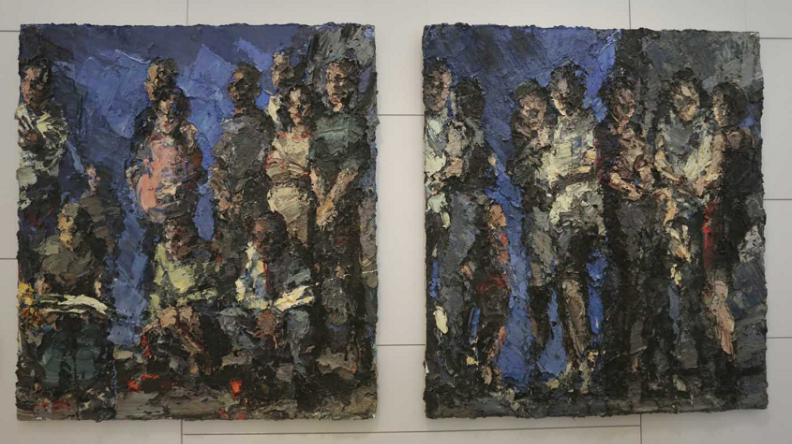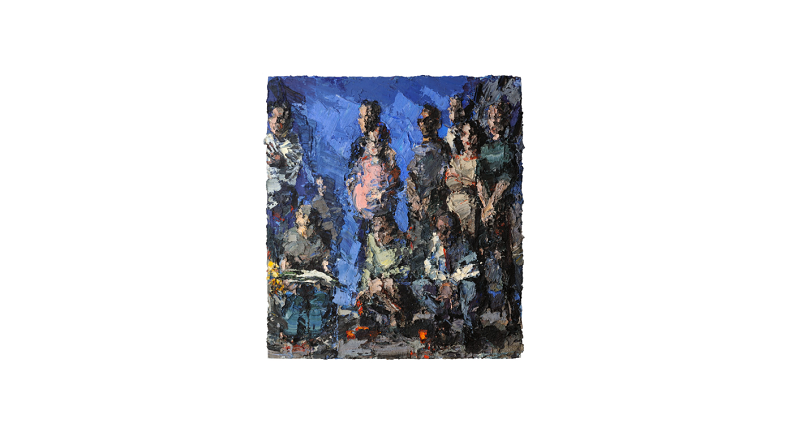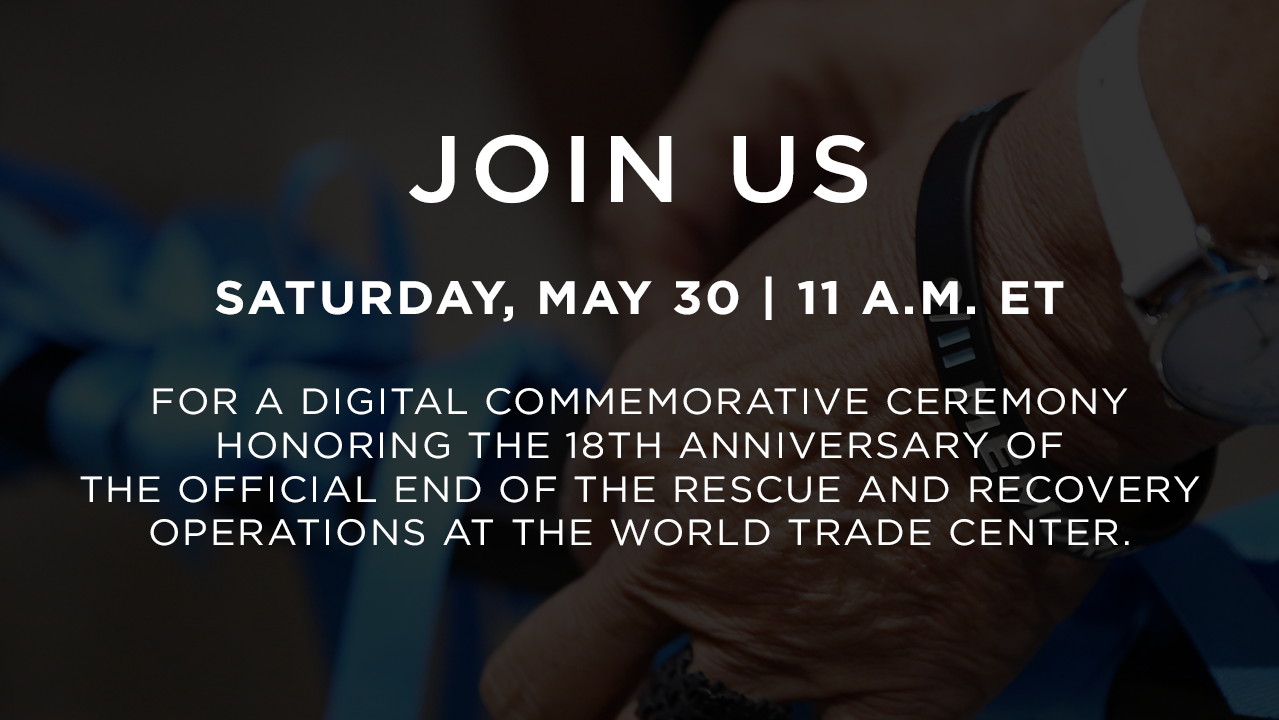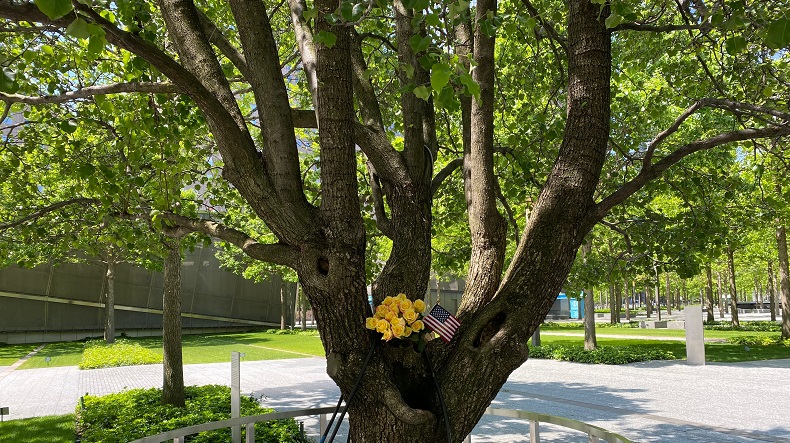Taking a Closer Look at Features Galleries: Response Art
Taking a Closer Look at Features Galleries: Response Art

During this temporary closure, the 9/11 Memorial Museum invites its community to explore a treasury of stories and materials available online, including Inside the Collection, a searchable online catalog of selections from the Museum’s permanent collection.
In the weeks ahead, we will invite readers to become better acquainted with the feature galleries, which provide wayfinding to these collection assets. Many of these galleries encompass items reflecting the uneasy times we confronted in the wake of 9/11. Many also hold ongoing continued relevance and inspiration for the societal challenges we are navigating today. The Response Art Gallery, for example, testifies to the urgency and irrepressibility of art-making as a reply to crisis.
September 11 generated wide-ranging forms of aesthetic commentary. Understandably, many of the paintings, prints, and sculptures in the Museum’s collection reckon with the physical evidence of these savage attacks, processing meaning through their depictions of the scale and phenomenon of that damage. Others attempted to interpret the ineffable loss of human life tallied. But artists also took stock through alternative subjects and less forensic creative strategies. An example meriting fresh consideration is David Stern’s early, powerful work, “The Gatherings.”
Unable to paint in the aftershock of 9/11, artist David Stern found consolation in strolling the stunned streets of Manhattan. A year earlier, he had become a naturalized citizen of the United States after immigrating with his family to New York City from Germany in 1994. New York was now home.
On his evening walks, Stern observed the recurring sight of neighbors and strangers on the streets together, gathered in quiet conversation or companionable silence. Public parks and the sidewalks outside local firehouses emerged as magnets for these informal vigils. Fresh flowers, candles, and notes soon aggregated at these sites, left as tributes to victims of the terror attacks and to memorialize the Twin Towers also destroyed on that dreadful Tuesday.
Stern was moved by these demonstrations of civic sorrow and solidarity. Recalling a ritual ceremony convened by the indigenous Pasmaquoddy people he had witnessed that summer in Maine, an idea took hold. Returning to his studio in Chelsea, he set to work trying to capture the equivalent spirituality he sensed in the circles of mourning New Yorkers forming spontaneously, for mutual support.
The result was a series of intensely felt, vigorously painted expressionist canvases which Stern called “The Gatherings”: an ode to the deep-felt, therapeutic need for human connectivity in a city better known for its hard-boiled hustle. The artist would later reflect about them: “They have to do with us, confronted with the enormity, not only of the attack and the loss of lives, but the irrevocable change which just had had our entire society thrown back into a medieval culture of war of tremendous dimensions.”
Twelve years after Stern created the paintings, and after their inclusion in touring exhibitions of his work nationally and abroad, “The Gatherings” were acquired for the 9/11 Memorial Museum’s permanent collection. In the tradition of hinged pairs of devotional artworks, except significant larger in scale, this diptych was chosen as a focal point for visitors on the Atrium Terrace when the Museum opened in May 2014.
That prominent placement on the wall outside the Museum Auditorium spoke to the experience shared by many after September 11 of finding comfort in the act of coming together; of exchanged handshakes, hugs, and prayers; of quick bonds formed to resume life as a privilege denied to those killed, and to heal the wounds inflicted by this unprecedented tragedy. The paintings were rotated off view several years later to accommodate a new installation, but the memory of their impact remains vivid.

With today’s mandates for social distancing, “The Gatherings” may stir a longing for physical communion denied us by a highly contagious pandemic disease. But the artwork invites another reading of coming together: uniting in the resolve to keep our distance from one another, in order to protect the safety of our families, neighbors, coworkers, and indispensable frontline responders.
By Jan Seidler Ramirez, Executive Vice President of Collections & Chief Curator, 9/11 Memorial & Museum
Previous Post
Join the 9/11 Memorial & Museum for the Annual May 30 Commemoration

While we will not be able to gather together in person in observance of the 18th anniversary of the end of the rescue and recovery effort at Ground Zero, please join us on for a special digital commemorative ceremony on Saturday, May 30, at 11 a.m. (ET).
Next Post
9/11 Memorial Commemorates Memorial Day

The Lens: Capturing Life and Events at the 9/11 Memorial & Museum is a photography series devoted to documenting moments big and small that unfold at the 9/11 Memorial and Museum.